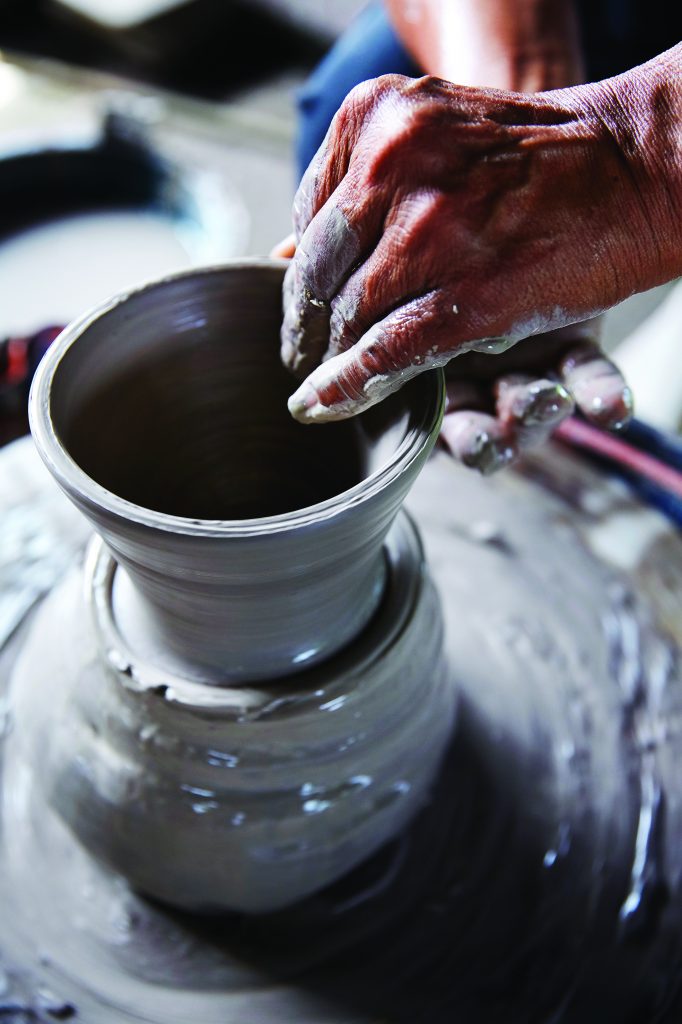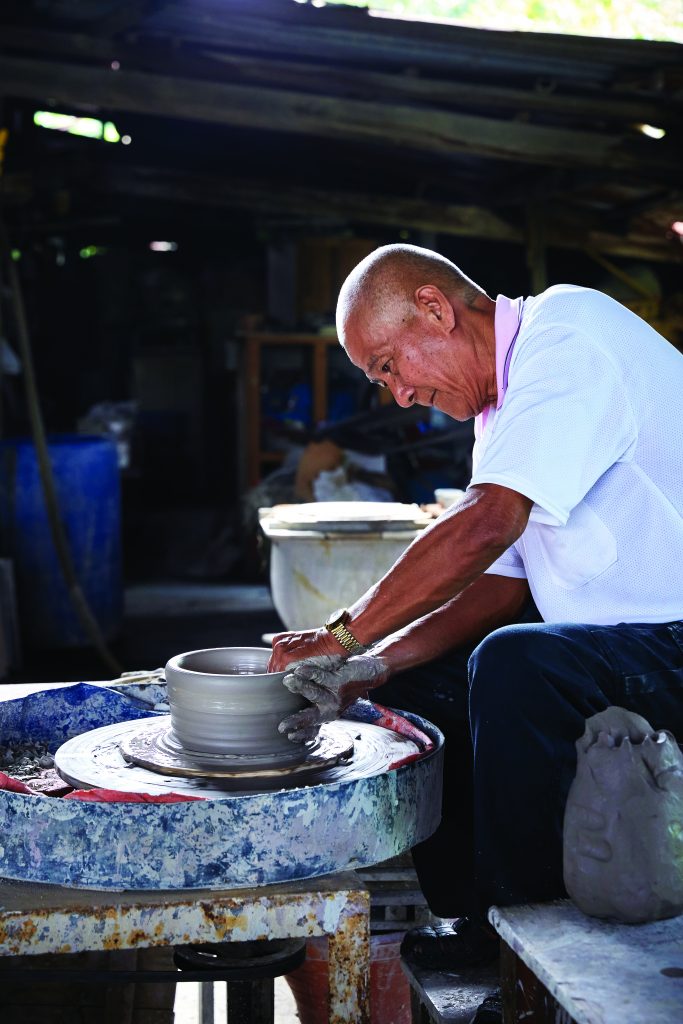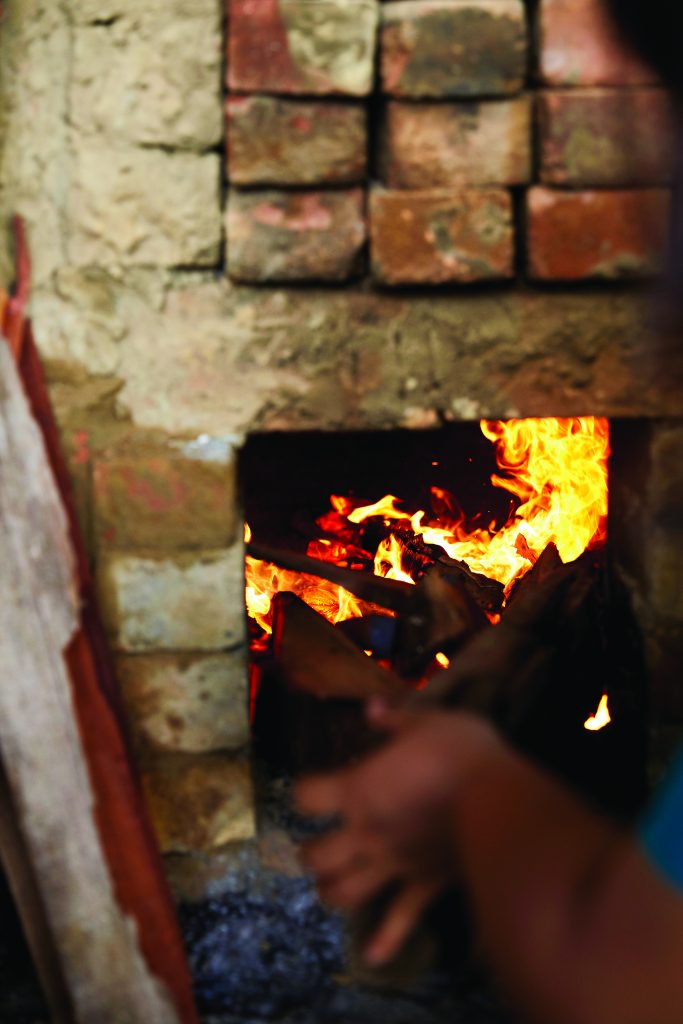Meet a dragon kiln master from Ipoh, once the ceramic capital of the world
Photography Soo Phye

Have I just stumbled into a post-apocalyptic site?
Entering Xin Fa Pottery after a short drive over a gravel path, I am stunned momentarily by the sight before me: haphazard piles of cockle shells, dusty sacks and bundles of wooden planks share space with rusty machines and assorted pottery. Then I see it – the 45-metre dragon kiln that forms the heart of this three-hectare site.
Long brick constructions that are shaped like a dragon and fuelled with wood to fire ceramics, dragon kilns are an ancient Chinese invention that spread to other parts of Southeast Asia in the early 20th century due to migration. One place that did particularly well was Ipoh, as its tin mining industry generated lots of surplus earth, which in turn produced a steady supply of raw material for the ceramic industry.

Chin Kam Peng, Xin Fa’s owner-partner, tells me that Ipoh’s earth (“thao” in Mandarin) is endowed with a special quality of resilience. “We found this out accidentally when a friend brought our pots to England for the first time. Our cargo reached the United Kingdom in the dead of winter. We were at first worried that due to the extreme change in temperature from tropical Malaysia, the pots would crack after being unloaded. But no such thing happened.”
Xin Fa – which old-timers might remember by the name Sin Cheak Seng – went on to do very well, exporting an assortment of pottery to Europe, Australia, the United States and Canada. As the industry flourished in the 1970s and 1980s, Ipoh was dubbed ceramic capital of the world.

With the decline of Ipoh’s mining industry, coupled with the advent of mechanised operations that use diesel and electricity, these laborious kilns began to die out. From over a hundred factories at its peak, the number has dwindled to less than 20 left along Jalan Kuala Kangsar, Bercham and Chemor. So much so that many locals are unaware of these “sleeping dragons” in their backyard.

But if Chin has his way, with some help from local artists, the ancient art might find a second lease of life. Local interest in ceramic art got a push in 2013 when Tan Vooi Yam, a third-generation pottery heir and ceramic artisan, approached Chin to construct a small kiln to produce artworks for an exhibition. At the urging of another local artist Eric Lai, Chin built another small kiln to cater for professional and hobby potters who wish to learn about wood-fired ceramics. Xin Fa also attracts artists who love to paint the foliage-enveloped yard with its abandoned wooden structures, where over a hundred workers once churned out ceramic ware by the lorryloads.
After checking out the dragon kiln, I wander through the grounds, laden with all kinds of ceramic and clay pottery wares and historical memorabilia. Picking up a bowl of ash glaze that looks like crystals, Chin explains: “This is the by-product of 70 hours firing at 1,400°C. Wood ash settles on the pieces during the firing, and the flame, ash and the minerals of the clay interact to form a natural ash glaze.

Then he shows me a broken shard, inscribed with Sin Cheak Seng’s name inscribed in Chinese. “This is the remains of a pot that we made for soya sauce manufacturers, another big industry in Perak. In the traditional way of making soya sauce, the beans are fermented in salt and dried in the open air for months, so the pots holding the mixture had to be able to withstand extreme salinity and high temperature. We were the only factory that could make such pots.”
Looking at my surroundings with new eyes, it dawns on me that this place is no less than a living museum. “Why didn’t you throw any of this stuff away?” I ask.
A wistful smile spreads over Chin’s face. “Call me sentimental, but to me these are pieces of Ipoh’s history. I’ve kept them all these years in hopes that one day somebody would recognise their value and rightful place in our history.”
Chin Kam Peng (Fatt Kor)
Lot 8317, 2 ½ Mile, Jalan Kuala Kangsar, Ipoh, Perak, Malaysia
Tel: +6012-501 5983





